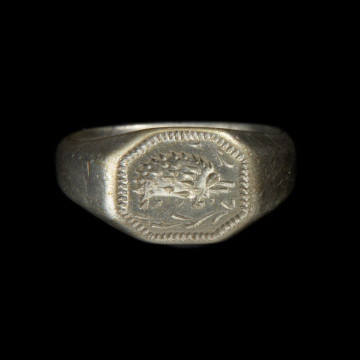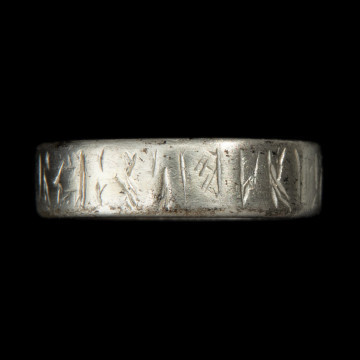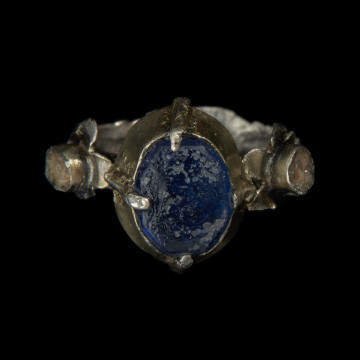
Signet ring with hedgehog
przełom XIV i XV wieku
National Museum in Szczecin
Part of the collection: Middle Ages
A glass two-segment bead, decorated with gold foil, discovered during excavations in 1961 on the site of an early-medieval stronghold in Kamień Pomorski, was made by pulling a glass tube, applying gold foil to it, which was then covered with a second layer of glass mass. In this technique, the glass mass was cut into sections and shaped with special tongs. The beads made in this way have a very characteristic bubble-like shape. The cylindrical beads formed from the glass tube were often further processed by annealing or sanding off any irregularities. The most common method of making glass beads in the early Middle Ages used the winding technique, which involved winding a thread or strip of heated glass onto a hot rod. As a result, glass beads often had traces of tape ends or clumping left on the surface. Another way of making beads was the so-called drop technique. In this technique, a small amount of glass mass was scooped onto a heated rod, dropped onto a washer, and then pierced with the hot rod. Ornaments were applied to the formed but not yet cooled beads – usually in the form of pieces of glass string, singular or multiple, formed in waves, zig-zag patterns or straight lines.
Ewa Górkiewicz-Bucka
Author / creator
Dimensions
cały obiekt: height: 1.2 cm
Object type
bead, jewellery
Technique
glass pipe pulling, impressing
Origin / acquisition method
field research
Creation time / dating
Creation / finding place
Owner
Muzeum Narodowe w Szczecinie
Identification number
Location / status

przełom XIV i XV wieku
National Museum in Szczecin

przełom XIV i XV wieku
National Museum in Szczecin

National Museum in Szczecin
DISCOVER this TOPIC
Castle Museum in Łańcut
DISCOVER this PATH
Educational path